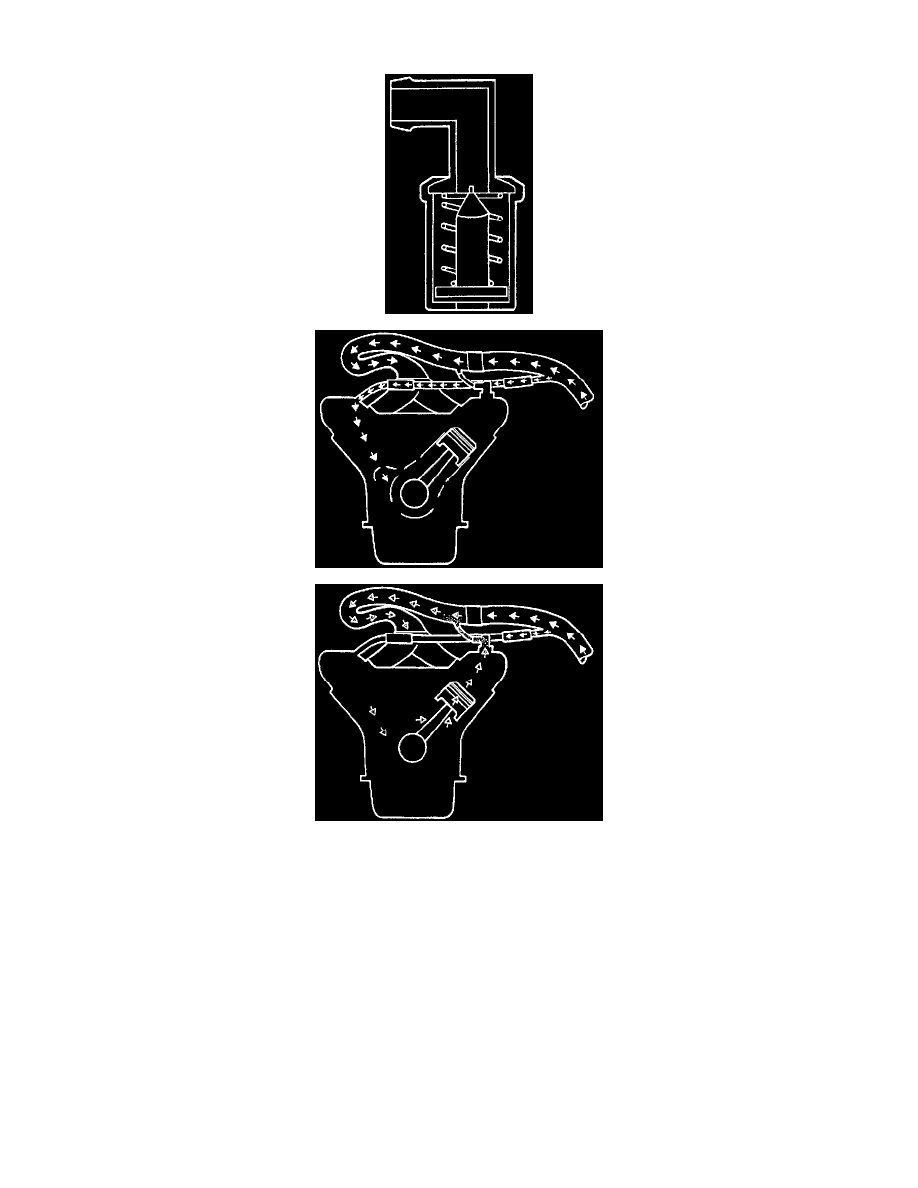SLX V6-3.2L SOHC (1996)

Positive Crankcase Ventilation: Description and Operation
POSITIVE CRANKCASE VENTILATION (PCV) SYSTEM
CRANKCASE VENTILATION SYSTEM PURPOSE
The crankcase ventilation system is used to consume crankcase vapors in the combustion process instead of venting them to the atmosphere. Fresh
air from the throttle body is supplied to the crankcase and mixed with blow-by gases. This mixture is then passed through the positive crankcase
ventilation (PCV) valve into the intake manifold.
CRANKCASE VENTILATION SYSTEM OPERATION
The primary control is through the positive crankcase ventilation (PCV) valve. The PCV valve meters the flow at a rate that depends on the intake
vacuum. The PCV valve restricts the flow when the inlet vacuum is highest.
In addition, the PCV valve can seal the intake manifold off in case of sudden high pressure in the crankcase.
While the engine is running, exhaust gases and small amounts of the fuel/air mixture escape past the piston rings and enter the crankcase. These
gases are mixed with clean air entering through a tube from the air intake duct.
During normal, part-throttle operation, the system is designed to allow crankcase gases to flow through the PCV valve into the throttle body to be
consumed by normal combustion.
A plugged valve or PCV hose may cause the following conditions:
^
Rough idle.
^
Stalling or slow idle speed.
